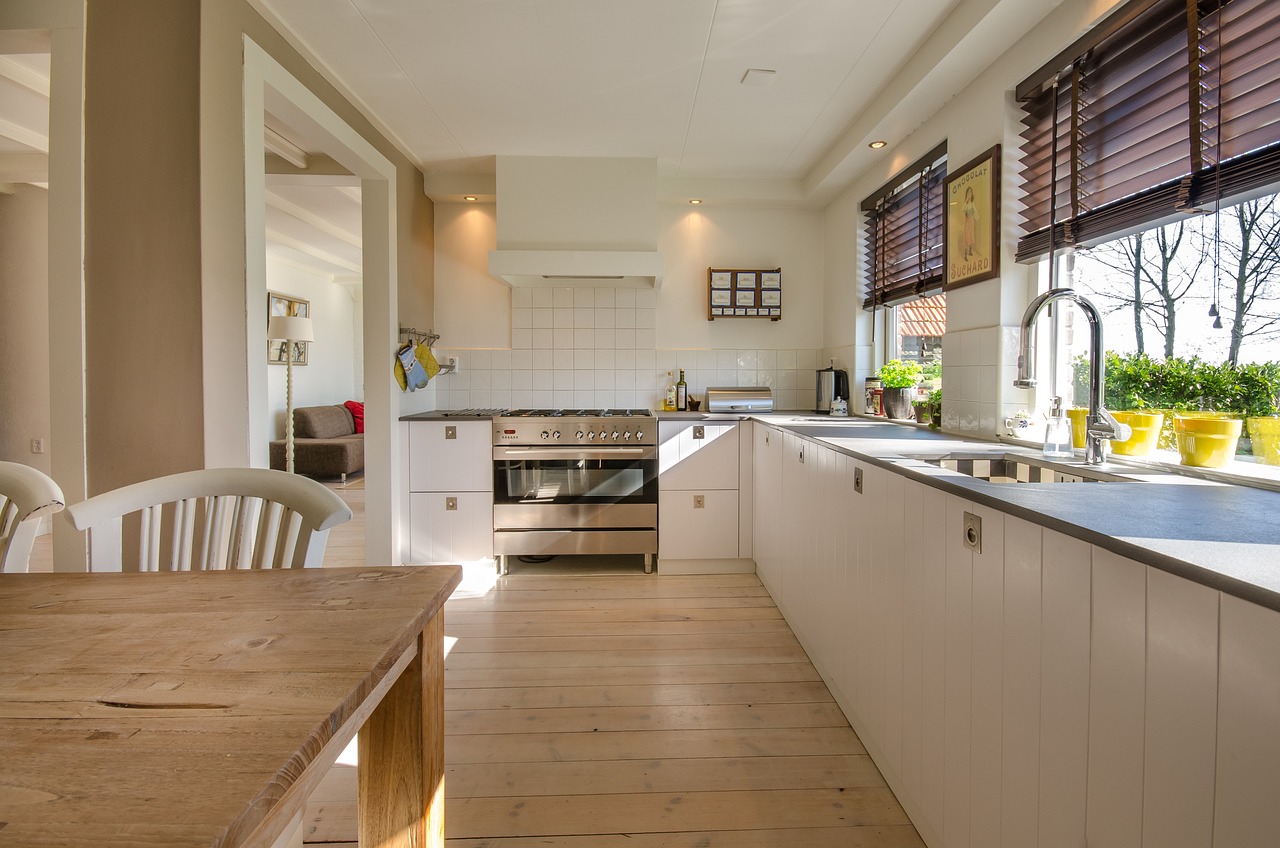Granite kitchen countertops remain a popular choice for homeowners due to their durability, natural beauty, and versatility. Known for being resistant to heat, scratches, water, and bacteria, granite provides a long-lasting surface ideal for busy kitchens. Its wide range of colors and patterns allows for customized designs that can complement any kitchen style.
Choosing the right granite involves considering not only aesthetics but also the specific type and color that best fit the kitchen’s overall look. With options spanning from classic whites and blacks to unique greens and reds, granite offers both functional and decorative benefits.
By understanding granite’s qualities and design possibilities, homeowners can make informed decisions that blend practicality with elegance, elevating their kitchen space effectively.
Granite Kitchen Countertops Overview
Granite countertops combine natural beauty with functional durability. They come in a variety of colors and patterns that complement different kitchen styles. Their physical characteristics make them suitable for both traditional and modern kitchen environments.
Unique Properties of Granite
Granite is a natural igneous rock formed from molten magma. It is extremely hard and dense, which makes it resistant to scratches and heat. This toughness allows granite countertops to endure daily kitchen activities without significant damage.
The surface is porous but can be sealed to reduce staining and moisture absorption. When properly maintained, granite can retain its polished finish for years. It is also resistant to most acids and household chemicals, making it a practical choice for kitchen use.
Granite’s natural texture varies, providing unique patterns and small mineral flecks. Each slab is one-of-a-kind, which adds value to the kitchen’s aesthetic.
Popular Colors and Patterns
Granite is available in a wide range of natural tones, from deep blacks and rich browns to soft whites and greys. Popular choices include:
- Black granite, offering a sleek, modern look
- White and light-colored granite, ideal for bright, classic kitchens
- Multi-colored granite with unique veining and mineral deposits
Patterns vary from subtle specks to bold, dramatic streaks. This variety allows homeowners to select granite that matches cabinetry, backsplashes, and overall kitchen design.
Color stability and pattern distinctiveness make granite versatile for different decor themes, whether minimalist or ornate.
Suitability for Modern Kitchens
Granite’s durability and aesthetic flexibility make it an excellent fit for modern kitchens. Its heat resistance supports the high cooking activity typical in these spaces. Additionally, granite’s hard surface withstands frequent use and the occasional impact better than some synthetic materials.
Its clean edges and polished finishes complement sharp modern cabinetry and appliances. Granite pairs well with neutral tones and bold contrasts, enabling streamlined, stylish kitchen designs.
Sealing granite surfaces helps maintain hygiene by preventing bacteria buildup, which meets the functional demands of busy households while maintaining an upscale appearance.
Selecting and Maintaining Granite Countertops
Granite countertops require careful selection and proper maintenance to ensure longevity and visual appeal. Key factors include slab quality, installation details, and suitable cleaning practices tailored to granite’s natural properties.
Choosing the Right Granite Slab
When choosing a granite slab, factors such as color, pattern, and finish are critical. Buyers should inspect slabs in person to evaluate consistency, veining, and any visible flaws. Larger slabs minimize seams, which can disrupt the aesthetic.
Finish options include polished, honed, and leathered. Polished surfaces are glossy but show fingerprints easily. Leathered finishes offer texture that conceals fingerprints and water spots. The choice depends on style preferences and maintenance willingness.
Durability and hardness ratings also matter. Higher quality granite resists scratches and heat. Buyers should consider the functional demands of their kitchen alongside the slab’s appearance.
Installation Considerations
Granite installation requires precise measurements due to the stone’s weight and rigidity. Seam placement should be planned to avoid disrupting the countertop’s natural flow, and seams should be minimized in high-visibility areas.
Professional installers use specialized adhesives and reinforcements to secure slabs safely. Proper support under overhangs prevents cracking.
Allowing for slab thickness—commonly 2-3 cm—is important for both durability and visual balance with cabinetry. Edge profiles like eased, bullnose, or ogee affect the overall look and should complement kitchen design.
Cleaning and Care
Granite countertops need gentle, regular cleaning with pH-neutral soaps or specially formulated granite cleaners. Abrasive or acidic cleaners can damage the stone’s sealant, leading to dullness and staining.
Sealing granite every 1-3 years prevents moisture absorption and stain development. Homeowners can test sealing needs by applying water drops—if absorbed, resealing is necessary.
For stubborn stains, poultices made from baking soda or commercial stain removers specifically for granite work best. Avoid harsh scrubbing to prevent surface damage.


Leave a Reply